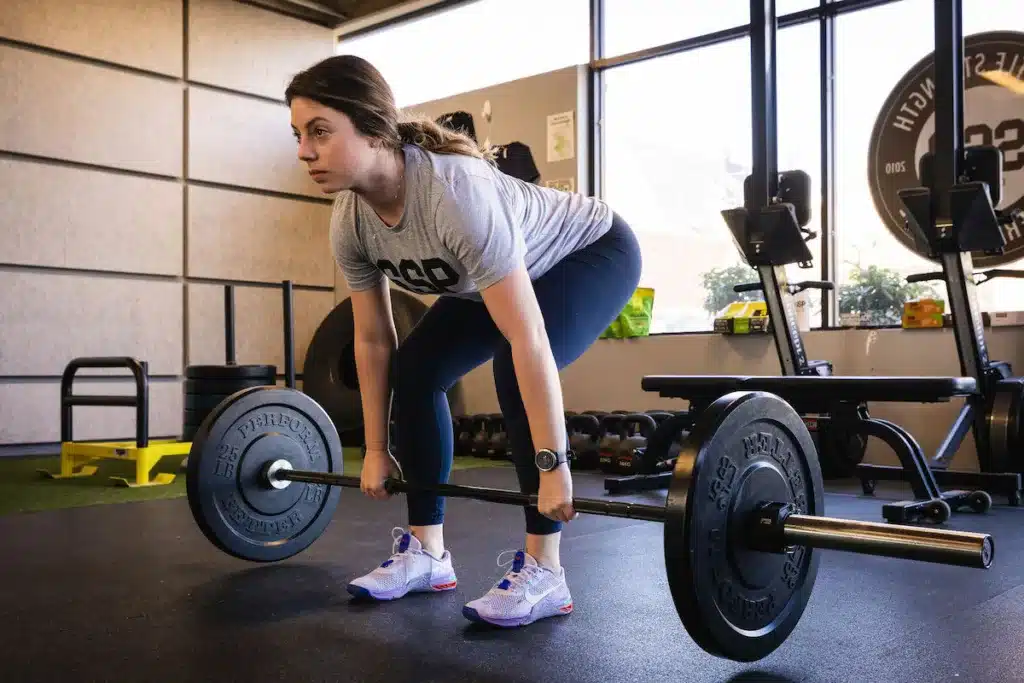Let’s talk about deadlifting form.
Deadlifting has ton of benefits, but we also know they can be a little complex and are (sometimes) intimidating to get started with. Even more-so than some exercises, getting the form right is really key to avoiding injury and maximizing benefit.
We also coach quite a few different variations of deadlifts at SSP – kettlebell, double kettlebell, barbell conventional, barbell sumo, trap bar, and more. Regardless of the variation, the common corrections we make hold true. For a visual of this, check out this Instagram post!

Deadlift Form Mistakes & How to Correct Them
Mistake #1: Yanking the bar off the ground.
When nervous about a new weight, we often lose patience and try to yank the bar up quickly. This can cause us to lose upper body positioning and core tightness, which are crucial for preventing injury.
How to fix it: Brace hard, tighten up, and be patient. You’ve got this!
Mistake #2: The bar is too far out in front of you.
How to fix it: Set up with the bar over your shoelaces and keep it in contact with your legs on the way up. This keeps your weight centered on your midfoot for a stronger lift!
Mistake #3: Squatting your deadlift.
Starting with your hips too low means the bar has to swerve around your knees, creating an inefficient bar path.
How to fix it: The position of your hips should be slightly above your knees and below your shoulders in the set up. If your hips are parallel with your knees, you are in more of a squat pattern versus a deadlift (or hinge) pattern.
Mistake #4: Losing tension through the lats and shoulders.
Tension in your lats and shoulders helps maintain a neutral spine during the deadlift.
How to fix it: Keep your shoulders down and back, or think of squeezing your armpits to engage your lats. Another tip is to imagine reaching your lats towards your back pockets.
Keep Working at Your Deadlift Form!
Remember, if you are working up to a heavier weight, don’t skip the warm up! Your body needs time to warm up the pattern and adapt to heavier loads. Please don’t go straight to your working weight. 1 or 2 warm up sets (sometimes more) are usually appropriate depending on how heavy you are lifting on any given day. Your SSP coaches are here to help you 🙂
Like I said at the beginning, we love deadlifts and think they are fantastic. They are a true full-body exercise that engages multiple muscle groups, including your hamstrings, glutes, back, core, and also builds your grip strength. The movement itself trains an important pattern (the hinge) which mimics real-life lifting scenarios when you are picking things up off the ground, and the stronger you are in that pattern, the stronger you are in everyday life!
Happy training!
Want to learn how to deadlift with great form (or maybe get stronger with your current deadlift)? Click here to join us!